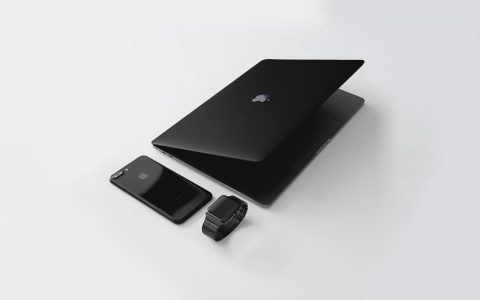Apple iPhone: 10 years on - Dispatch Weekly
June 29, 2017 - Reading time: 11 minutes

Today marks the 10 year anniversary of the Apple iPhone.
From their first generation phone, how did Apple’s journey into what is now one of the most sought after company’s in the world, begin?
Steve Jobs first presented the iPhone at the Moscone Center in San Francisco, on January 9th 2007. Five months later the first iPhone went on sale and Apple made mobile history.
The iPhone marked the beginning of smartphones with touch screens and apps, as well as beginning the digital media revolution.
The success was perhaps because of the brand’s new take on business phones. The iPhone dropped physical pads altogether, present in the then dominant Blackberry and Nokia phones, and focused on single-use programs called apps.
Since then, the iPhone has seen many redesigns.
 Image source: BGR
Image source: BGR
iPhone (2007)
Taking inspiration from the iPod, the original model had no third-party apps, GPS, or video recording. In fact, it was an extremely simple phone for business, whose main outstanding feature was its design.
The main differentiators was the iconic home button which remains to this day, the widescreen touch controls, and a multi-touch screen.

Image source: PhonesData
iPhone 3G (2008)
After the success of the original device, Apple released a new model, able to pick up a 3G signal, and introduced the App Store. An ingenious move that has ensured the brand remains a dominant figure since.
iPhone 3GS (2009)
By now, other manufacturers were beginning to follow Apple’s example, copying phone features and taking design queues from Apple.
Seeing the potential in appealing to a broader market beyond business professionals, Apple introduced the “S” variant of the 2008 model which included, for the first time, video recording along with a camera upgrade.

Image source: Scatter Tech
iPhone 4 (2010)
Until then, iPhone designs had been similar to original iPods. However, the iPhone 4 depicted a shift in the design of Apple phones into sleeker, thinner outward designs.
The new boxy look included a bumped up pixel resolution on the 3.5-inch screen, and added a front-facing camera, thus starting the age of selfies.
iPhone 4s (2011)
The most notable feature of this slightly improved version of the iPhone 4 wasn’t the improved camera, but rather the introduction of Siri, Apple’s voice-based assistant which began an entirely new age of smartphones which incorporated voice assistants.

Image Source: Phys
iPhone 5 (2012)
Apple sought to give its most popular model yet, the iPhone 4, another redesign, focusing on introducing a bigger 4-inch display that allowed an extra row of app icons.
In an excellent move for accessories manufacturers and Apple brand accessory sales, Apple introduced the first lightning connector.

Image source: Mac Rumours
iPhone 5s & 5C (2013)
The iPhone 5S was a relaunch of the previous model which came with increased processor speed and graphics ability.
Setting a benchmark for the industry to follow once again, the iPhone 5s introduced the Touch ID fingerprint scanner built into the home button, which has now become almost a standard on all smartphones.
At the same time, Apple released a much more colourful and affordable option to customers, the iPhone 5C which included colour cases, iOS7, and a new flatter design.

Image source: Forbes
iPhone 6 & iPhone 6 Plus (2014)
Changing their design once again, Apple slimmed down the casing and increased the screen size to launch the iPhone 6. Building on the introduction of Touch ID fingerprint scanners, Apple added Near-Field Communication (NFC) for the first time, making Apple Pay possible.
The iPhone 6 also included a “Plus” range featuring a larger 5.5-inch screen version of the model.
iPhone 6s & Plus (2015)
This model focused on introducing a few new software features to enhance its predecessors.
The features included Force Touch, which allowed the screen to see additional menu options by applying pressure on the screen, and live photos which allowed you to blend videos and still photography.
Much like the 6 Plus, the 6s Plus was a variant of its model on a larger size and with an upgrade in the processor and graphics chip.

Image source: Mac Rumours
iPhone SE (2016)
Thanks to Androids operating systems, customers now found themselves able to choose amongst a variety of price competitive alternatives. To remain competitive, Apple relaunched the iPhone 5 smaller design, but packed all of the latest internal components inside, able to produce a cheaper option for customers.

Image Source: BGR
iPhone 7 & Plus (2016)
The latest addition to the iPhone models, the iPhone 7 made another shift in design, dropping the 3.5 mm headphone jack, and replacing the physical home button for a capacitive one to add water resistant features.
The larger version of this model also included a dual camera 12-megapixel telephoto lens that added to the main 12-megapixel camera, giving the phone both optical and digital zoom.
The future of iPhones, iPhone 8?
If Apple follows its usual release dates, the iPhone 8 is expected to be out in September. The upcoming model promises to deliver some exciting new features as well as a new design.
Rumours include a new design with a bezel-less display and a completely virtual home button.
But perhaps most exciting is talks of integration of virtual reality and facial recognition. It goes without saying that there’s no doubt Apple will mark its 10th anniversary in spectacular fashion.

DW Staff
David Lintott is the Editor-in-Chief, leading our team of talented freelance journalists. He specializes in covering culture, sport, and society. Originally from the decaying seaside town of Eastbourne, he attributes his insightful world-weariness to his roots in this unique setting.




